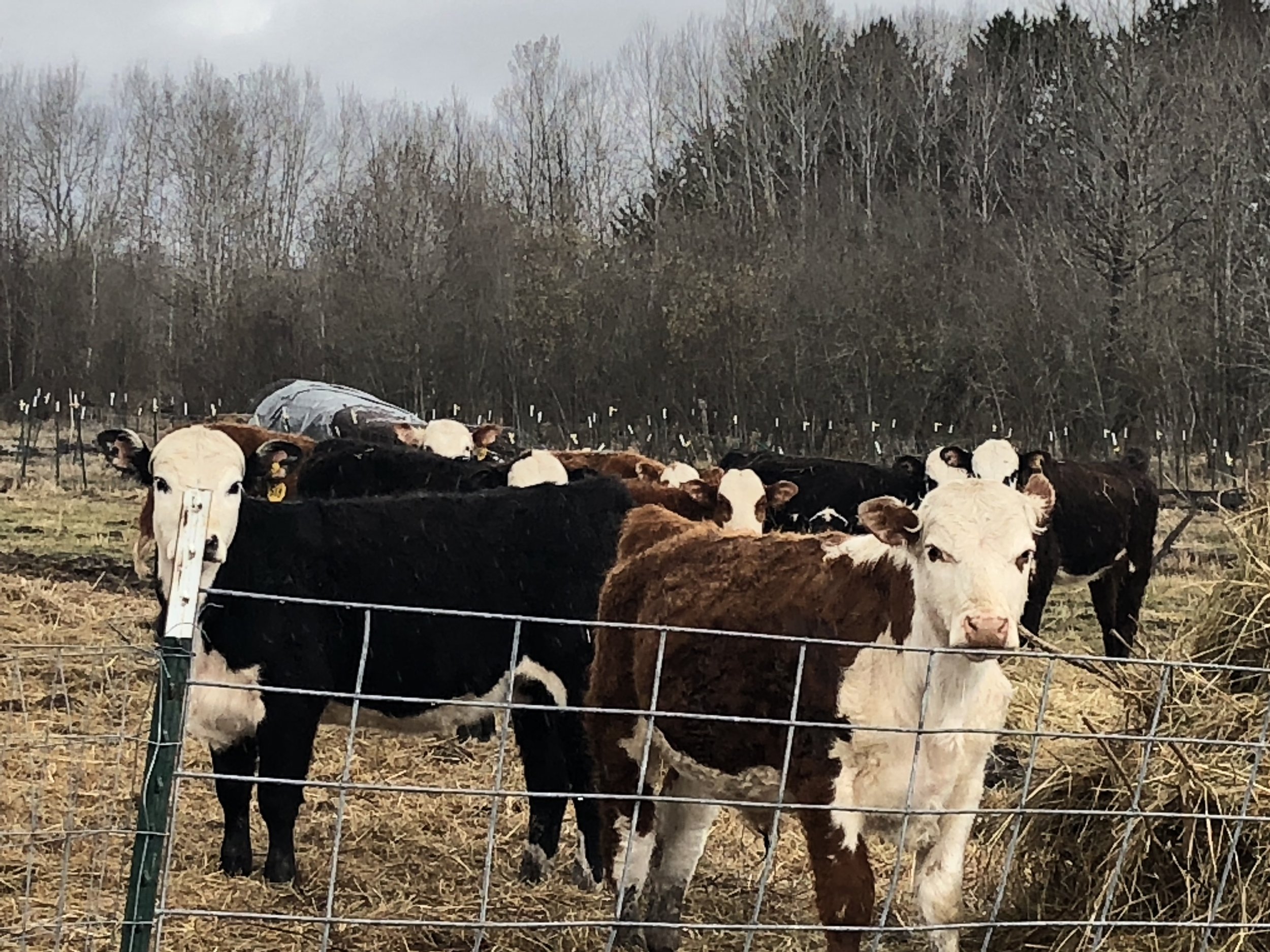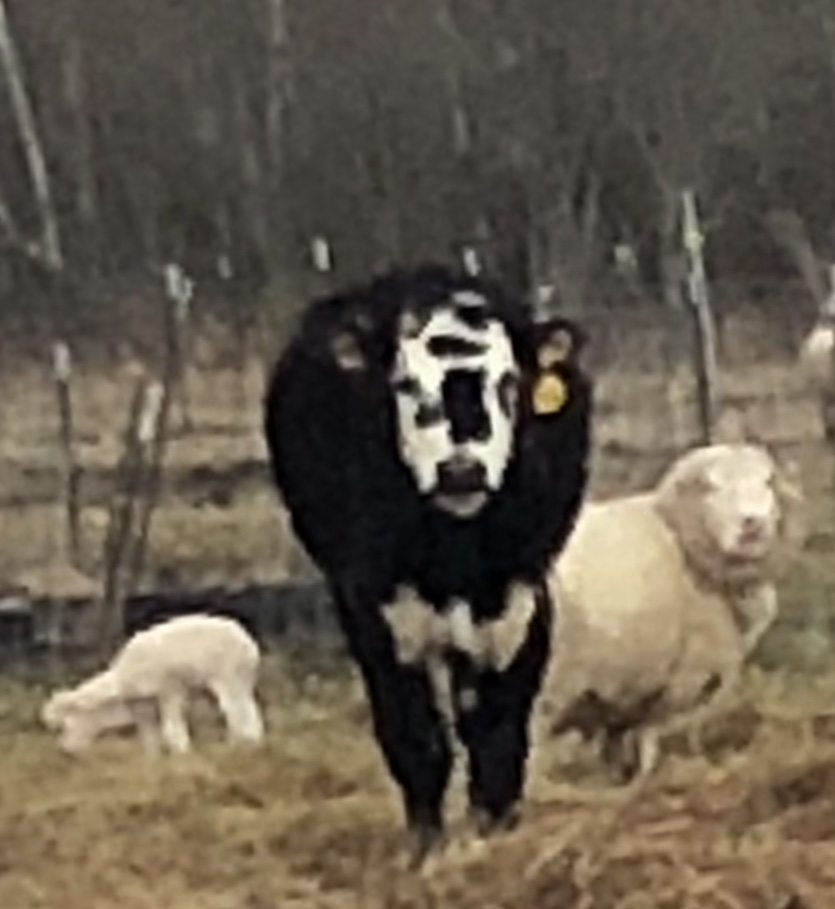The producer counts on the map are taken from the Census of Agriculture, conducted every five years by the USDA. It is intended to be a “complete” count of U.S. farms and ranches and the people who operate them. Even small plots of land - whether rural or urban - growing fruit, vegetables or some food animals count if $1,000 or more of such products were raised and sold during the Census year. While it would seem that this could be a fairly accurate count of growers/producers of local food, on the Iron Range we have many part-time operations where the heads of household have non-farming full time jobs and much of what they produce is sold or bartered on a very small-scale basis. It is likely that many of these “producers” aren’t even aware of a Census of Agriculture nor would they see themselves as part of something that includes 20,000 acre commodity crop operations. We talked with several of these small-scale growers and present short descriptions here as an illustration.
For example, a small “veggie farm” near Grand Rapids plants ½ acre of what the USDA would call “specialty crops” each year and an acre or so of hops for brewing. They sell to friends but not at one of the area’s farmers markets. Another somewhat larger farm keeps bees as well as chickens for eggs and two hoop houses for vegetables. They occasionally sell produce and honey to our local food coop, but can’t always connect with them due to work schedules–both householders also work full time. They sell eggs to family and close friends. Most of their acreage is planted for pollinators. Neither of the preceding operations has been included in the Census of Agriculture, but each plans to eventually produce more and sell at local farmers markets.
A third example: a young couple just south of here just started to raise heritage breed hogs for market. They have future plans to expand into producing charcuterie, canned goods, and vegetables. But they’re working on establishing relationships with a meat processor and pursuing the necessary food safety training and certification. They both have off-farm jobs. One final example is a small grower with 40 acres, 5 of which are in production yielding asparagus and garlic for sale at a local farmers market. One member of the household has a full-time off-farm job and the spouse works part time. They also raise 4-6 pigs for their own consumption and sale to close friends. They do fill out the Census of Agriculture because their sales top the $1,000 threshold. As these examples illustrate, on the Iron Range there is a mix of producers–some are clearly-identifiable farms, some even with full-time farmers, and many very small producers with off-farm jobs.
Our state has a history of production that we can use as a model. In 1930, Minnesota had 76,329 commercial apple farms. Now there are 488. In 1930, there was not a single Minnesota county that did not produce apples commercially. How times have changed. Today, only 0.3% of the food products sold by farmers are sold directly to their ultimate consumers. The average food item travels 1,500 miles to our tables in the Midwest. And 90% of what Minnesotans eat is produced out of state. In 1930, 70% of Minnesota farms raised food for their own and their neighbors’ use. Now, Minnesota farms, especially in the central and southern part of the state mostly produces corn and soybeans for livestock to eat. Northern Minnesota has the capacity to feed itself with the right kind of investment in our producers and local food infrastructure.
Small producers need a way to transport their goods, and back hauling (filling empty distributor’s trucks with local farm product back to the distributor for re-distribution is a pilot project in central Minnesota) is a possibility. But the cost for delivery, without these arrangements, is prohibitive. Insurance is the other barrier. Large distributors like Sysco, Bix and Sodexho require farmers who sell to them to carry $5 million in product liability insurance. That leaves most of our local producers out of the formal distribution supply line. We need medium-sized aggregators who can collect and then market produce. The Cook Area Farmers Market just became a licensed aggregator–this is a first step! And we need back hauling or another innovative transportation system that meets the needs of small producers at a cost they can afford.
(See processor map) The information on the map shows value-added food processors in the region. The businesses shown have wholesale food processor/manufacturer licenses through the Minnesota Department of Agriculture (MDA). MDA defines a wholesale food processor/manufacturer as a business that, “makes food and sells to other businesses for resale. This includes processing or manufacturing raw materials and other food ingredients into food items, reprocessing of food items, or packaging of food.”
Our map represents 35 businesses, but there are some factors that may cause gaps in the data. For example, if a business was making and selling food, but the majority of their revenue came from their own retail location, they would be licensed as a Retail Food Handler, rather than a Wholesale Food Processor/Manufacturer. Italian Bakery, located in Virginia, MN, is an example of a business listed as a Retail Food Handler, rather than a Wholesale Food Processor/Manufacturer, even though they make and sell their products to other businesses.
Even when we include the value-added processor businesses that are operating under other licenses, the opportunity for the expansion in the region is immense. Currently, area businesses are producing a limited range of products, with the majority falling into just four categories: wild rice, maple syrup, bakery items, and ice. While these food products may be the norm for this area, businesses that have experimented in other areas have found success.
Crapola, the whimsically-named granola processor out of Ely, has been expanding their sales and distribution since their inception in 2007. The Crapola website currently lists 75 store locations carrying Crapola across Minnesota—with nine in Ely alone—and out of state stores as far as Anchorage, Alaska. Their business trajectory is a model for other regional producers. They started small, sold at their local farmers market, moved into a rental kitchen and expanded their sales into grocery stores, and eventually built their own production facility. While wild rice and maple syrup may always be the staple items produced in this region, we have the opportunity and ability to produce a wide array of food products here.
(See retail map) The information on the map shows 42 grocery stores in the region. All of these businesses hold a Retail Food Handler license from the Minnesota Department of Agriculture (MDA). According to the MDA, “retail food handlers sell food directly to the end consumer. Examples of retail businesses regulated by the MDA include grocery stores, convenience stores, bakeries, and meat markets. Retail businesses can also be regulated and inspected by local public health agencies and the Minnesota Department of Health (MDH).”
Due to the wide variety of business that fall under the retail food handler license, we chose to focus on full-service grocery stores where the majority of household grocery shopping is done. Of the 42 stores, 13 locations are operated by two regionally owned chains: Super One and Zup’s. There are 19 locally-owned stores, accounting for nearly half of the 43 grocery stores in the region. The locally-owned stores include small country markets, cooperatives, and family-owned businesses.
Except for a handful of larger cities in the region (Virginia, Hibbing, Grand Rapids, and Ely), most rural communities only have one grocery store.
A 2016 study by the University of Minnesota Duluth titled, Food Access Issues and Comprehensive Planning: An analysis of food access in the communities of Mountain Iron, Tower, and Soudan, found that geographic distance of a grocery store is tremendously important to community residents:
Despite their higher prices and limited selection compared to big box grocery stores like Super One, focus group participants rely strongly on their local Zups, due to its close proximity and ease of access. Residents showed concern regarding the recent closing of Zups in nearby Aurora, Minnesota. For locals, Zups is not just another business: it is an important counterpoint to potential food insecurity in a rural community.
Since the publication of the study, an additional Zups location in Cook, MN has closed—at least temporarily—due to a fire.
The prevalence of small, locally-owned stores provides an opportunity for local farmers, value-added food businesses, and distribution channels to more easily place their products in the stores. Large-scale chain stores are often unable or unwilling to place local products on their shelves. Small, independently-owned stores have the autonomy to make local purchasing decisions.
Although the majority of these retailers carry a relatively small amount of local products at the moment, their autonomy creates an opportunity for the region to gradually shift towards selling more and more local products.
(See distributor map) According to “Mapping the Minnesota Food Industry” 2009, “it is...difficult to compile hard numbers covering the food processing and distribution sectors since these firms are not required to share data with public bodies....” So there’s no “index of distributors” as a handy reference. And some businesses who do distribute, like Dahl’s Sunrise Dairy of Babbitt and Wildly Organic of Silver Bay, don’t show up as distributors even after an extensive web search. They are small, niche-product distributors, and they are local but nearly invisible. There are likely many more that we did not find.
The same document concludes that “few channels exist that can aggregate production from a number of small producers,” as noted in the “Producers” narrative. The study recommends the following:
“Plan and build storage and distribution networks that create local efficiencies. The infrastructure under which commodities and local foods are traded was designed to increase the efficiency of DISTANT TRADING of food markets, under the assumption that fossil-fuel energy would be inexpensive and readily available [forever].
Local efficiencies – systems that draw their strength from local transactions, proximity of farmers to consumers, first-hand knowledge of each other’s needs, local resiliency in the face of potential breakdowns, fostering knowledge of local place, building capacities among residents, promoting healthier eating and exercise, and connecting residents into a more harmonious social fabric – have never been the primary purpose of food planning; THEY SOON WILL BE (emphasis ours).”
The Iron Range is ripe for small-scale aggregation systems and niche product (i.e., locally produced) distributors. A large potential market for purchase of locally grown foods can be found in education (National Farm-to-School network) and, more significantly, in health care institutions. According to Ryan Pesch, University of Minnesota Extension, in his “Food to Institution Survey,” Northeast Minnesota Health Care institutions report buying only $33,000 worth of food directly from local farmers in 12 counties. With institutions like Essentia Health interested in buying local, this could increase exponentially with the right investments in infrastructure.
We need to build production, and, at the same time, build food processing and distribution networks that meet local needs. Through the Arrowhead Grown campaign, we are working hard to increase the demand for local food. The challenge is to capitalize on the supply possibilities that we have and to grow them.
By Marlise Riffel and Kelsey Gantzer with graphics by Matt Jankila

































































